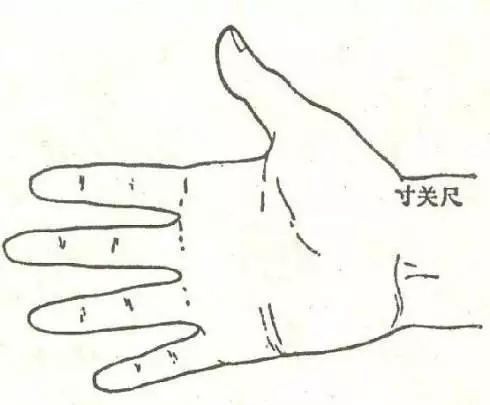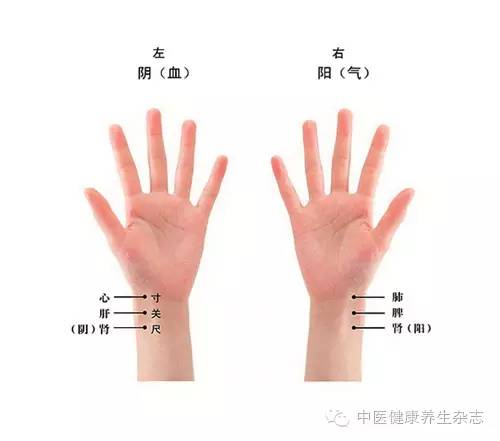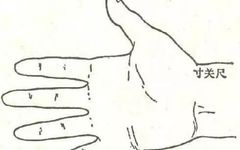Pregnancy is characterized by a special type of pulse known as “slippery pulse” (hua mai). “Slippery pulse refers to a pulse that flows smoothly, appearing round and smooth, like a pearl rolling on a jade plate.” When palpating the pulse, if it is slippery, it feels like a row of bubbles or a small iron ball passing successively under the practitioner’s ring finger, middle finger, and index finger, at a relatively fast speed, one after another. The slippery pulse is strong because the blood flow in a pregnant woman increases by more than 20% compared to normal, making the pulse stronger than that of an average person. This is the most obvious distinction, hence the pulse during pregnancy is usually a slippery pulse.However, a slippery pulse does not necessarily indicate pregnancy. Besides pregnancy, a slippery pulse can also appear in normal conditions or certain diseases, so it cannot definitively confirm pregnancy. Young and vigorous individuals may also exhibit a slippery pulse. In TCM, diagnosing pregnancy cannot rely solely on pulse diagnosis; it requires a combination of “observation, listening, inquiry, and palpation,” along with the patient’s condition, such as whether menstruation has stopped, the duration of amenorrhea, and other physical conditions to make a judgment.How to palpate for pregnancy/slippery pulse?The area for pulse diagnosis is generally the cun (寸) pulse, which is divided into three parts: cun (寸), guan (关), and chi (尺). Extend your hand flat and place it naturally on the table; at the wrist, you will see a protruding bone on the side of the thumb. Place the fingers of the other hand on this protrusion, on the inner edge, where you can feel the arterial pulsation. This area is the “guan.” The area towards the fingertips is the cun, and the area towards the elbow is the chi. Use the index, middle, and ring fingers to palpate the cun pulse.When palpating, first place the middle finger on the guan pulse area, then the index finger on the cun pulse area, and the ring finger on the chi pulse area. The three fingers should be arched, with the fingertips aligned, and the pads of the fingers should touch the three areas, as the pads are more sensitive. The spacing of the three fingers should be adjusted according to the patient’s height; if tall, the fingers should be slightly spaced apart, and if short, the fingers should be closer together. Once the positions are accurate, apply pressure with all three fingers simultaneously.“When pressed, it flows smoothly, round and smooth like pressing a rolling bead.” According to the above method, place the index, middle, and ring fingers on the patient’s cun, guan, and chi areas, respectively. The area pressed by the ring finger is the “cun,” the middle finger is the “guan,” and the index finger is the “chi.” Here, cun and chi imply that the closest to the palm is “cun,” and the farthest is “chi.”If pregnant, all three fingers—the ring, middle, and index—can clearly feel a lively pulse, and from “cun” to “chi,” it flows like clouds and water, pulsating in succession. If not pregnant, the pulse at the “chi” area is generally not palpable.In simple terms: if pregnant, all three fingers can clearly feel a lively pulsating pulse; if any of the three fingers does not feel the pulsation, it is not a pregnancy pulse.
Palpating the pulse is not just about casually placing fingers on the wrist; finding the right position is crucial!
When palpating, first use the middle finger to press on the inner side of the wrist’s protruding bone, which is the radial styloid process (known in TCM as “guan”), referred to as middle finger defining guan. Then use the index finger to press on the area before the guan to define cun, and the ring finger to press on the area after the guan to define chi. Just ensure that the three fingers are naturally aligned and in contact with each other.

It is important to note that,
if the patient is a child, the three fingers need to be brought together tightly during palpation;
if the patient is an average adult, the three fingers can be placed naturally together;
if the patient is a very tall adult, the fingers should be evenly spaced, with the three fingers slightly apart.
||| Why does TCM require both hands for pulse diagnosis?
In TCM, the “cun, guan, chi” of the left hand represents different meanings than those of the right hand. The left hand’s “cun, guan, chi” represents “heart, liver, kidney”, while the right hand’s “cun, guan, chi” has two interpretations: one represents “lung, spleen, life gate”, and the other represents “lung, spleen, pericardium.” Therefore, TCM requires both hands for pulse diagnosis.
Understanding this, we can begin to learn how to analyze pulse patterns!
TCM categorizes pulses into twenty to thirty types; it is unnecessary for the average person to know them all. Here, we will introduce a few common pulse patterns: floating and sinking, large and small.
Before discussing floating and sinking, let’s first understand what a normal pulse pattern looks like.
 A normal pulse pattern is generally referred to as a smooth pulse, which is the pulse of a healthy person without disease. A normal pulse rate is generally 72-80 beats per minute, neither floating nor sinking, neither large nor small, calm and gentle, soft yet strong, with a consistent rhythm. The chi pulse, when pressed, has a certain strength and varies normally with the main activities and climatic conditions.
A normal pulse pattern is generally referred to as a smooth pulse, which is the pulse of a healthy person without disease. A normal pulse rate is generally 72-80 beats per minute, neither floating nor sinking, neither large nor small, calm and gentle, soft yet strong, with a consistent rhythm. The chi pulse, when pressed, has a certain strength and varies normally with the main activities and climatic conditions.
1Floating and Sinking
When discussing floating and sinking, we first clarify a concept: a pulse that is superficial under the skin is a floating pulse, while a pulse that is deep within the muscles and bones is a sinking pulse.
[Floating Pulse]
It can be felt lightly, and pressing harder slightly reduces its strength, like wood floating on water.
A floating pulse is located superficially, resting on the skin. When the fingers are lightly placed on the pulse, a distinct pulsation can be felt, and pressing harder slightly weakens it.This pulse is called a floating pulse.
When a floating pulse appears, the following conditions may occur:
A floating pulse indicates that the pathogenic factor is at the superficial level, suggesting that the pathogen has invaded the muscle and skin, causing the defensive yang to rise in resistance, resulting in a pulse that is floating and strong. Chronic internal injury leading to deficiency may also present as a floating pulse, where the yang cannot sink and remains superficial, but the pulse will be floating, large, and weak. This type of pulse is often a severe case of qi deficiency and blood loss, classified as a deficient pulse, and should not be mistaken for an external pathogen.
[Sinking Pulse]
It does not respond to light pressure, but can be felt with heavy pressure, like a stone sinking to the bottom of the water.
A sinking pulse is located deeper, deep within the muscles and bones. When lightly touched, it cannot be felt. Continuous pressure is needed to detect a distinct pulsation.
When a sinking pulse appears, the following conditions may occur:
A sinking pulse indicates an internal condition, suggesting that the pathogenic factor is internal. At this time, the body’s righteous qi is battling the pathogenic factor internally, causing qi and blood to be trapped, hence the pulse appears strong and sinking, indicating an internal excess condition. If the organs are weak, the yang qi is deficient, and qi and blood are insufficient, the pulse will appear sinking and weak, indicating an internal deficiency condition.
2Large and Small
The size of the pulse refers to the strength of the pulse’s force. A strong pulsation is a solid pulse, while a weak one is a deficient pulse.
After locating the pulse, gradually press down to feel the strength and changes of the pulse. When pressing down, if the pulsation feels lively and elastic, it indicates that the pulse is strong.
If the fingers feel that the pulse is weak and lacking vitality, even with increased pressure, the pulsation remains weak or difficult to feel, then this pulse is considered weak. The doctor assesses whether the pulse is weak or strong based on this.
Understanding Health through Pulse Diagnosis: Why can pulse diagnosis reveal the state of the body and diseases? From a modern medical perspective, the pulse is a rhythmic pulsation produced by the arteries during the contraction and relaxation of the heart. The pulse is closely related to the heart’s contraction force, heart rate, rhythm, blood volume, and vascular elasticity, and can reflect cardiovascular function to some extent. From the perspective of TCM theory, the formation of pulse patterns is closely related to the heart’s pulsation, the balance of qi and blood, and the functional activities of the organs. The heart governs the blood vessels, and the heart’s yang qi is the driving force that propels blood through the vessels, circulating throughout the body. The pulsation of the pulse is also closely related to the qi and blood flowing within the vessels, as qi and blood are the material basis for the pulse’s pulsation. Furthermore, for blood to circulate continuously in the vessels and distribute throughout the body, coordination and cooperation from other organs are necessary. For instance, the lungs participate in generating the zong qi (ancestral qi) and regulating the circulation of qi and blood; the spleen governs blood, ensuring that blood circulates within the vessels without overflowing; the liver stores blood and regulates circulation, facilitating smooth qi and blood flow; the kidneys store essence, which is the root of both yin and yang, and kidney essence can transform into blood, serving as one of the material bases for blood production, known as “essence and blood share the same source.” Therefore, through pulse diagnosis, one can understand the state of the organs and the functions of qi and blood, which provides a means to assess health and diagnose diseases.
In the Huangdi Neijing, a pulse diagnosis method is recorded, which involves selecting three arteries from the upper (head), middle (hands), and lower (feet) parts of the body (referred to as heaven, earth, and man) for examination, totaling nine pulse points. This method is called the “three regions and nine pulses method.” Due to the multiple examination points, it is also referred to as the “comprehensive examination method.” The purpose is to identify changes in pulse patterns that may indicate corresponding changes in specific areas, meridians, and organs.
The Nanjing proposes a pulse diagnosis method called “only taking the cun.” The cun refers to the area where the radial artery is located on the inner side of the wrist (anatomically known as the radial styloid process), which is currently the most commonly used pulse diagnosis area. According to TCM theory, the blood vessels of the human body connect throughout, linking the organs internally and reaching the skin and surface externally, circulating qi and blood continuously. The lungs have the function of “governing the hundred vessels,” meaning that the movement of qi and blood in the five organs and six bowels, as well as the twelve meridians, begins and ends with the lungs. The cun area is also the location of an important acupuncture point of the hand taiyin lung meridian, known as the “Taiyuan point,” where the qi of the twelve meridians converges, making it the “meeting point of the pulses.” Therefore, the pulse at the cun can reflect the qi and blood status of the five organs and six bowels. Additionally, this area has thin skin and prominent pulses, making it easy to palpate, thus it is an ideal location for pulse diagnosis. Therefore, since the first TCM pulse diagnosis monograph, Mai Jing, written by Wang Shuhe during the Western Jin Dynasty, the method of “only taking the cun” proposed in the Nanjing has been advocated. The cun pulse is divided into three parts: cun, guan, and chi, marked by the protruding bone at the back of the wrist. The inner side is the guan, the area towards the wrist is the cun, and the area towards the elbow is the chi. Each hand has three parts: cun, guan, and chi, totaling six pulse points. The left three parts correspond to the heart, liver, and kidney, while the right three parts correspond to the lung, spleen, and kidney (some say lung, spleen, and life gate).
During pulse diagnosis, it is essential to maintain a quiet environment to avoid external disturbances. Additionally, pulse diagnosis should not be performed immediately after exercise, after meals, or during emotional instability, as the resulting pulse patterns may not accurately reflect the true condition of the body.
Four Steps of Pulse Diagnosis: 1. Have the patient sit upright or lie down, with the forearm naturally extended forward, approximately at the same level as the heart, wrist straight, palm facing up, and relaxed, with a soft pulse pillow under the wrist. 2. The doctor first uses the middle finger to define the guan area, then places the index and ring fingers on the cun and chi areas, respectively. For children, due to the shorter pulse position at the cun, the thumb or index finger is often used to “define three areas,” without needing to differentiate between cun, guan, and chi. When diagnosing oneself, the diagnosing hand often comes from below the hand being diagnosed, and then the three fingers are used to determine the positions of cun, guan, and chi in the aforementioned order. 3. When palpating, the three fingers should be slightly arched, allowing the “finger tip” (the junction of the fingertip and finger pad) to closely touch the pulsating area, as this area has a more sensitive touch. Adjust the distance between the three fingers according to the patient’s height, arm length, and the thickness of the examiner’s fingers. 4. After positioning the fingers, apply light, medium, and heavy pressure in different ways, combining upward, downward, and lateral movements to identify the pulse pattern. Generally, all three fingers are used simultaneously to palpate. Light pressure on the skin is called “floating” or “lifting”; heavy pressure down to the muscles and bones is called “sinking” or “pressing”; and moving the fingers with moderate pressure to carefully seek the pulse pattern is called “medium” or “searching.” Normal pulse patterns should have stomach qi, spirit, and root. The pulse pattern refers to the characteristics of the pulsation that the doctor perceives under the fingers, such as the speed of the pulse, strength, whether the rhythm is regular, the depth of the pulse, the length and width, whether it flows smoothly, and its hardness. The combination of these features forms the various pulse patterns recorded by the doctor during diagnosis. TCM emphasizes “knowing the normal to understand the abnormal.” Only by knowing the normal pulse patterns can we judge which pulse patterns are abnormal. So, what is a normal pulse pattern? A normal pulse pattern refers to the pulse of a healthy person, specifically characterized by: the presence of pulses in the cun, guan, and chi areas of both hands, neither floating nor sinking, neither large nor small, calm and gentle, soft yet strong, with a consistent rhythm. The chi pulse, when pressed, has a certain strength and varies normally with physiological activities and climatic conditions. This pulse pattern can be summarized as having stomach qi, spirit, and root. In ancient times, without watches or timing devices, doctors needed to calm themselves before pulse diagnosis, maintaining even breathing and focusing their attention on palpating the pulse, calculating the patient’s pulse beats based on their own breathing. This situation is referred to as “adjusting breath to palpate pulse.” Generally, one breath is counted as “one breath,” typically consisting of 4 to 5 beats, meaning that during one breath, the pulse should beat 4 to 5 times, approximately 60 to 90 beats per minute. Nowadays, we can look at a watch to calculate the patient’s pulse rate. Additionally, during palpation, each hand should be palpated for no less than one minute; if the time is too short, some intermittent pulse patterns may be missed. Normal pulse patterns can change in response to internal and external factors, and these changes fall within physiological ranges. It is important to note these changes during pulse diagnosis. For example, seasonal and climatic changes, differences between genders, age and body type variations, as well as emotions, exercise, and diet can all cause changes in pulse patterns. For instance, generally, women’s pulse patterns are slightly weaker than men’s; during pregnancy, a slippery and rapid pulse is common; younger individuals tend to have faster pulses, with infants under three years old having a normal pulse of seven to eight beats per breath, and children aged five to six having a normal pulse of six beats per breath. Young adults tend to have strong and large pulses, while older individuals often have pulses that are more wiry and hard; thin individuals with less subcutaneous fat often have floating pulses, while overweight individuals with more subcutaneous fat often have sinking pulses; athletes typically have slow and strong pulses; and mental laborers often have weaker pulses than physical laborers. Furthermore, if no pulse is felt at the cun area or if the pulse is very weak, do not panic; it may be located diagonally towards the back of the hand from the chi area, known as “oblique flying pulse,” or on the dorsal side of the cun area, known as “reversed guan pulse.” These are all due to variations in the course of the radial artery and still fall within normal pulse patterns.〖Organ Regulation 12 Sections〗〖Five Elements 16 Sections〗〖Tongue Diagnosis, Hand Diagnosis, Face Diagnosis, 60 Sections〗〖Five Movements and Six Qi 26 Sections〗〖Fasting 17 Sections〗〖Pediatric Tuina 20 Sections〗〖San Jiao Regulation 10 Sections〗〖Twelve Meridians 12 Sections〗〖Ear Acupuncture 21 Sections〗〖Sanfu Moxibustion 12 Sections〗〖Guided Movement + Five Animal Play 24 Sections〗〖Gynecological Disorder Regulation 20 Sections〗〖Shanghan Lun 13 Sections〗〖Zhu You Technique 20 Sections〗〖Regulating the Root Chakra 20 Sections〗〖Eight Methods of the Spirit Turtle 20 Sections〗〖Introduction to Acupuncture Techniques Video 5 Sections〗〖Postpartum Recovery 20 Sections】〖Moxibustion Guidance】Scan the QR code below to participate in the learning
Normal pulse patterns should have stomach qi, spirit, and root. The pulse pattern refers to the characteristics of the pulsation that the doctor perceives under the fingers, such as the speed of the pulse, strength, whether the rhythm is regular, the depth of the pulse, the length and width, whether it flows smoothly, and its hardness. The combination of these features forms the various pulse patterns recorded by the doctor during diagnosis. TCM emphasizes “knowing the normal to understand the abnormal.” Only by knowing the normal pulse patterns can we judge which pulse patterns are abnormal. So, what is a normal pulse pattern? A normal pulse pattern refers to the pulse of a healthy person, specifically characterized by: the presence of pulses in the cun, guan, and chi areas of both hands, neither floating nor sinking, neither large nor small, calm and gentle, soft yet strong, with a consistent rhythm. The chi pulse, when pressed, has a certain strength and varies normally with physiological activities and climatic conditions. This pulse pattern can be summarized as having stomach qi, spirit, and root. In ancient times, without watches or timing devices, doctors needed to calm themselves before pulse diagnosis, maintaining even breathing and focusing their attention on palpating the pulse, calculating the patient’s pulse beats based on their own breathing. This situation is referred to as “adjusting breath to palpate pulse.” Generally, one breath is counted as “one breath,” typically consisting of 4 to 5 beats, meaning that during one breath, the pulse should beat 4 to 5 times, approximately 60 to 90 beats per minute. Nowadays, we can look at a watch to calculate the patient’s pulse rate. Additionally, during palpation, each hand should be palpated for no less than one minute; if the time is too short, some intermittent pulse patterns may be missed. Normal pulse patterns can change in response to internal and external factors, and these changes fall within physiological ranges. It is important to note these changes during pulse diagnosis. For example, seasonal and climatic changes, differences between genders, age and body type variations, as well as emotions, exercise, and diet can all cause changes in pulse patterns. For instance, generally, women’s pulse patterns are slightly weaker than men’s; during pregnancy, a slippery and rapid pulse is common; younger individuals tend to have faster pulses, with infants under three years old having a normal pulse of seven to eight beats per breath, and children aged five to six having a normal pulse of six beats per breath. Young adults tend to have strong and large pulses, while older individuals often have pulses that are more wiry and hard; thin individuals with less subcutaneous fat often have floating pulses, while overweight individuals with more subcutaneous fat often have sinking pulses; athletes typically have slow and strong pulses; and mental laborers often have weaker pulses than physical laborers. Furthermore, if no pulse is felt at the cun area or if the pulse is very weak, do not panic; it may be located diagonally towards the back of the hand from the chi area, known as “oblique flying pulse,” or on the dorsal side of the cun area, known as “reversed guan pulse.” These are all due to variations in the course of the radial artery and still fall within normal pulse patterns.〖Organ Regulation 12 Sections〗〖Five Elements 16 Sections〗〖Tongue Diagnosis, Hand Diagnosis, Face Diagnosis, 60 Sections〗〖Five Movements and Six Qi 26 Sections〗〖Fasting 17 Sections〗〖Pediatric Tuina 20 Sections〗〖San Jiao Regulation 10 Sections〗〖Twelve Meridians 12 Sections〗〖Ear Acupuncture 21 Sections〗〖Sanfu Moxibustion 12 Sections〗〖Guided Movement + Five Animal Play 24 Sections〗〖Gynecological Disorder Regulation 20 Sections〗〖Shanghan Lun 13 Sections〗〖Zhu You Technique 20 Sections〗〖Regulating the Root Chakra 20 Sections〗〖Eight Methods of the Spirit Turtle 20 Sections〗〖Introduction to Acupuncture Techniques Video 5 Sections〗〖Postpartum Recovery 20 Sections】〖Moxibustion Guidance】Scan the QR code below to participate in the learning


